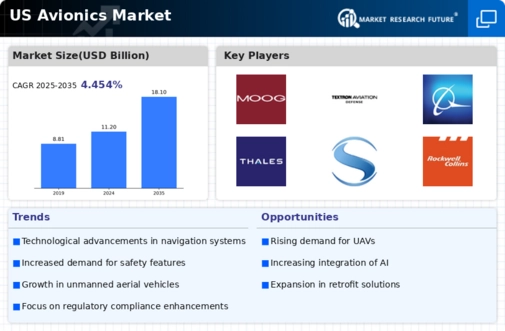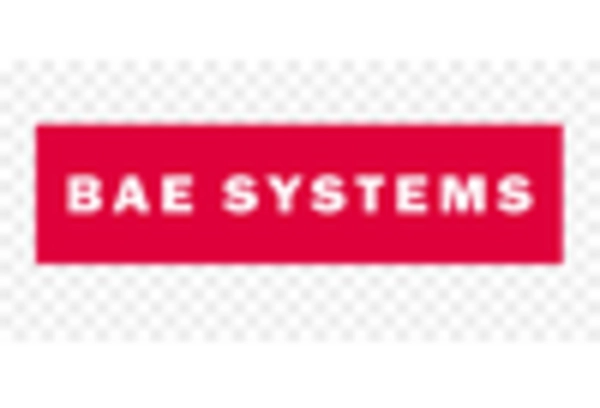Expansion of Commercial Aviation
The expansion of commercial aviation in the United States is a critical driver for the avionics market. With an increasing number of passengers and cargo transported annually, airlines are investing heavily in upgrading their avionics systems to meet regulatory requirements and enhance operational efficiency. The Federal Aviation Administration (FAA) has reported a steady increase in air traffic, with projections indicating a rise of 3.5% in passenger numbers over the next decade. This growth necessitates the adoption of modern avionics solutions, thereby propelling the market forward. The competitive landscape among airlines further fuels the demand for innovative avionics technologies.
Investment in Research and Development
Investment in research and development (R&D) within the avionics market is a pivotal driver of innovation and growth. Companies are allocating substantial resources to develop cutting-edge technologies that enhance flight safety, efficiency, and passenger experience. The FAA has recognized the importance of R&D in advancing aviation technologies, leading to partnerships with private firms and academic institutions. This collaborative approach is expected to yield advancements in areas such as artificial intelligence, machine learning, and data analytics, which are increasingly integrated into avionics systems. The focus on R&D is likely to position the avionics market for sustained growth in the coming years.
Growing Focus on Cybersecurity Measures
The growing focus on cybersecurity measures within the avionics market is becoming increasingly critical. As aircraft systems become more interconnected and reliant on digital technologies, the potential for cyber threats escalates. Regulatory bodies, including the FAA, are emphasizing the need for robust cybersecurity protocols to protect sensitive avionics systems from potential breaches. This heightened awareness is driving investments in cybersecurity solutions, with estimates suggesting a market growth of approximately 10% annually in this sector. The emphasis on cybersecurity not only enhances the safety of aviation operations but also instills confidence among stakeholders, thereby supporting the overall growth of the avionics market.
Emergence of Unmanned Aerial Vehicles (UAVs)
The rise of unmanned aerial vehicles (UAVs) is significantly influencing the avionics market. As industries such as agriculture, logistics, and surveillance increasingly adopt UAV technology, the demand for specialized avionics systems tailored for these applications is on the rise. The UAV segment is expected to witness a robust growth rate, with estimates suggesting a CAGR of around 15% over the next five years. This trend indicates a shift in the market dynamics, as traditional avionics manufacturers adapt to cater to the unique requirements of UAVs, thereby expanding their product offerings and market reach.
Increased Demand for Advanced Navigation Systems
The avionics market is experiencing a notable surge in demand for advanced navigation systems. This trend is driven by the growing need for enhanced safety and efficiency in air travel. As airlines and private operators seek to optimize flight paths and reduce operational costs, the integration of sophisticated navigation technologies becomes paramount. According to recent data, the market for navigation systems is projected to grow at a CAGR of approximately 7.5% over the next five years. This growth is indicative of a broader shift towards automation and precision in aviation, which is likely to reshape the avionics market landscape significantly.

















Leave a Comment